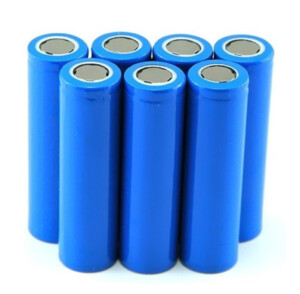
LITHIUM-ION BATTERIES
Standard and custom Li-ion batteries
OVERVIEW
Lithium-ion batteries appeared in the early 1990’s and were first marketed by Sony. These batteries now have a leading position on the rechargeable battery market. Their main advantage is their high energy density (two to five times higher than Nickel Metal Hydride, for instance).
Lithium-ion or Li-Ion batteries are based on the reversible exchange of lithium-ions between the positive electrode, usually made from cobalt or manganese dioxide, and the negative electrode made from graphite.

CUSTOM LITHIUM-ION BATTERY PACKS
As a leading custom Lithium-ion-battery pack assembler, we hold a very wide range of industrial cells in stock to offer the most comprehensive range of battery packs on the market.
As the choice of cell is a key component of battery performance based on the energy requirement, the budget and the application, we stock the majority of lithium-ion cells available on the market. Panasonic, LG, Samsung, Sony Murata, Molicel and Saft are brands we always keep in stock. We also keep most sizes available for current supply but also for new projects like popular 18650 cells but also 18500, 14500, 21700, D and several prismatic cells such as the very popular 103450 cell.
STANDARD LITHIUM-ION BATTERY PACKS
We have developed a UN38.3 and IEC 62133v2 approved range of standard battery packs with BAK cells that covers a wide range of applications, allowing our customers to access a comprehensive offer without high MOQs and certification costs.
- Range validated by our R&D department with UN38.3 / IEC62133 / UL1642 certifications
- Li-ion cells with a capacity of 3350mAh
- Built-in safety PCM developed by our R&D department
- Flying leads output 100-120mm (custom options available upon request)
- Charge temperature: 0°C to +45°C
- Discharge temperature: -10°C to +60°C
View our standard range Lithium-Ion packs below
| Part Number | Nominal Voltage | Nominal Capacity | Config. | Max Charge Current | Max Charge Voltage | Max Discharge Current | Wires | NTC | Dimensions |
|---|---|---|---|---|---|---|---|---|---|
| MGL00842 | 3.6V | 3.35Ah | 1S1P | 3A | 4.2V | 3.4A | 24 AWG | No | 18.6 x 68.5mm |
| MGL00843 | 3.6V | 3.35Ah | 1S1P | 3A | 4.2V | 3.4A | 24 AWG | Yes 10K | 18.6 x 68.5mm |
| MGL00844 | 3.6V | 3.35Ah | 1S1P | 3A | 4.2V | 3.4A | 22 AWG | No | 18.6 x 68.5mm |
| MGL00846 | 3.6V | 3.35Ah | 1S1P | 3A | 4.2V | 3.4A | 22 AWG | Yes 10K | 18.6 x 68.5mm |
| MGL00847 | 3.6V | 6.7Ah | 1S2P | 3A | 4.2V | 3.4A | 24 AWG | No | 37.5 x 19 x 70mm |
| MGL00848 | 3.6V | 6.7Ah | 1S2P | 3A | 4.2V | 3.4A | 24 AWG | Yes 10K | 37.5 x 19 x 70mm |
| MGL00849 | 3.6V | 6.7Ah | 1S2P | 3A | 4.2V | 3.4A | 22 AWG | No | 37.5 x 19 x 70mm |
| MG00850 | 3.6V | 6.7Ah | 1S2P | 3A | 4.2V | 3.4A | 22 AWG | Yes 10K | 37.5 x 19 x 70mm |
| MGL00851 | 3.6V | 10.05Ah | 1S3P | 3A | 4.2V | 3.4A | 24 AWG | No | 56 x 19 x 70mm |
| MGL00852 | 3.6V | 10.05Ah | 1S3P | 3A | 4.2V | 3.4A | 24 AWG | Yes 10K | 56 x 19 x 70mm |
| MGL00853 | 3.6V | 10.05Ah | 1S3P | 3A | 4.2V | 3.4A | 22 AWG | No | 56 x 19 x 70mm |
| MGL00854 | 3.6V | 10.05Ah | 1S3P | 3A | 4.2V | 3.4A | 22 AWG | Yes 10K | 56 x 19 x 70mm |
| MGL00855 | 7.2V | 3.35Ah | 2S1P | 3A | 8.4V | 3.4A | 24 AWG | No | 38 x 19 x 70mm |
| MGL00856 | 7.2V | 3.35Ah | 2S1P | 3A | 8.4V | 3.4A | 24 AWG | Yes 10K | 38 x 19 x 70mm |
| MGL00857 | 7.2V | 3.35Ah | 2S1P | 3A | 8.4V | 3.4A | 22 AWG | No | 38 x 19 x 70mm |
| MGL00858 | 7.2V | 3.35Ah | 2S1P | 3A | 8.4V | 3.4A | 22 AWG | Yes 10K | 38 x 19 x 70mm |
| MGL00859 | 7.2V | 6.7Ah | 2S2P | 3A | 8.4V | 3.4A | 24 AWG | No | 38 x 37.5 x 70mm |
| MGL00860 | 7.2V | 6.7Ah | 2S2P | 3A | 8.4V | 3.4A | 24 AWG | Yes 10K | 38 x 37.5 x 70mm |
| MGL00861 | 7.2V | 6.7Ah | 2S2P | 3A | 8.4V | 3.4A | 22 AWG | No | 38 x 37.5 x 70mm |
| MGL00862 | 7.2V | 6.7Ah | 2S2P | 3A | 8.4V | 3.4A | 22 AWG | Yes 10K | 38 x 37.5 x 70mm |
| MGL00863 | 10.8V | 3.35Ah | 3S1P | 3A | 12.6V | 3.4A | 24 AWG | No | 56 x 19 x 70mm |
| MGL00864 | 10.8V | 3.35Ah | 3S1P | 3A | 12.6V | 3.4A | 24 AWG | Yes 10K | 56 x 19 x 70mm |
| MGL00865 | 10.8V | 3.35Ah | 3S1P | 3A | 12.6V | 3.4A | 22 AWG | No | 56 x 19 x 70mm |
| MGL00866 | 10.8V | 3.35Ah | 3S1P | 3A | 12.6V | 3.4A | 22 AWG | Yes 10K | 56 x 19 x 70mm |
| MGL00867 | 14.4V | 3.35Ah | 4S1P | 3A | 16.8V | 3.4A | 24 AWG | No | 38 x 38 x 70mm |
| MGL00868 | 14.4V | 3.35Ah | 4S1P | 3A | 16.8V | 3.4A | 24 AWG | Yes 10K | 38 x 38 x 70mm |
| MGL00869 | 14.4V | 3.35Ah | 4S1P | 3A | 16.8V | 3.4A | 22 AWG | No | 38 x 38 x 70mm |
| MGL00870 | 14.4V | 3.35Ah | 4S1P | 3A | 16.8V | 3.4A | 22 AWG | Yes 10K | 38 x 38 x 70mm |
| MGL00882 | 14.4V | 6.7Ah | 4S2P | 3A | 16.8V | 3.4A | 24 AWG | No | 74 x 37 x 66mm |
| MGL00883 | 14.4V | 6.7Ah | 4S2P | 3A | 16.8V | 3.4A | 24 AWG | Yes 10K | 74 x 37 x 66mm |
| MGL00884 | 14.4V | 6.7Ah | 4S2P | 3A | 16.8V | 3.4A | 22 AWG | No | 74 x 37 x 66mm |
| MGL00885 | 14.4 | 6.7Ah | 4S2P | 3A | 16.8V | 3.4A | 22 AWG | Yes 10K | 74 x 37 x 66mm |
All dimensions are subject to a tolerance of +/- 1mm.
Advantages of our Lithium-Ion battery packs:
- Wide temperature range
- Low self-discharge
- High energy density
- Available from stock
LITHIUM-ION APPLICATIONS

Medical

Embedded Electronics

Mobility

Power Tools

Instrumentation

UAV
COBALT VS MANGANESE
Although cobalt has been used for a longer period of time, manganese is by nature less dangerous even when the cells are misused so the protection circuits can be simplified. In addition to improved safety, the cost of manganese as a raw material is lower than the cost of cobalt. On the other hand, it has a lower energy density, its capacity drops at temperatures higher than 40°C and it ages faster than cobalt. Take a look at the advantages and disadvantages of the two chemical compositions below.
- COBALT
- MANGANESE
Energy Density (Wh/Kg) | 140 | 120 |
Safety | When there is an overload, the cobalt electrode supplies excess lithium that can be transformed into metallic lithium, which leads to a potential safety risk if it is not protected by a protection circuit. | During an overload, the manganese electrode has a lower lithium content which means that only the element heats up. The protection circuits can be simplified for the small 1 and 2 cell packs. |
Temperature | Wide range of temperatures. Best suited to work at high temperatures. | Loses capacity above 40°C. Not as resistant at higher temperatures. |
Ageing | Short term storage is possible. The impedance increases with time. The new versions can be stored for longer. | Short term storage possibility is slightly lower than with cobalt. The impedance does not change much during the life cycle of the element. The shelf life is difficult to predict because of continuous improvements to the chemistry. |
Life cycle | 300 cycles, capacity of 50% at the 500th cycle | Can be shorter than cobalt. |
Cost | The cost of the raw materials is high and a protection circuit increases the cost. | Raw material is 30% cheaper than the cobalt. A simplified protection circuit is a real advantage in terms of cost. |










